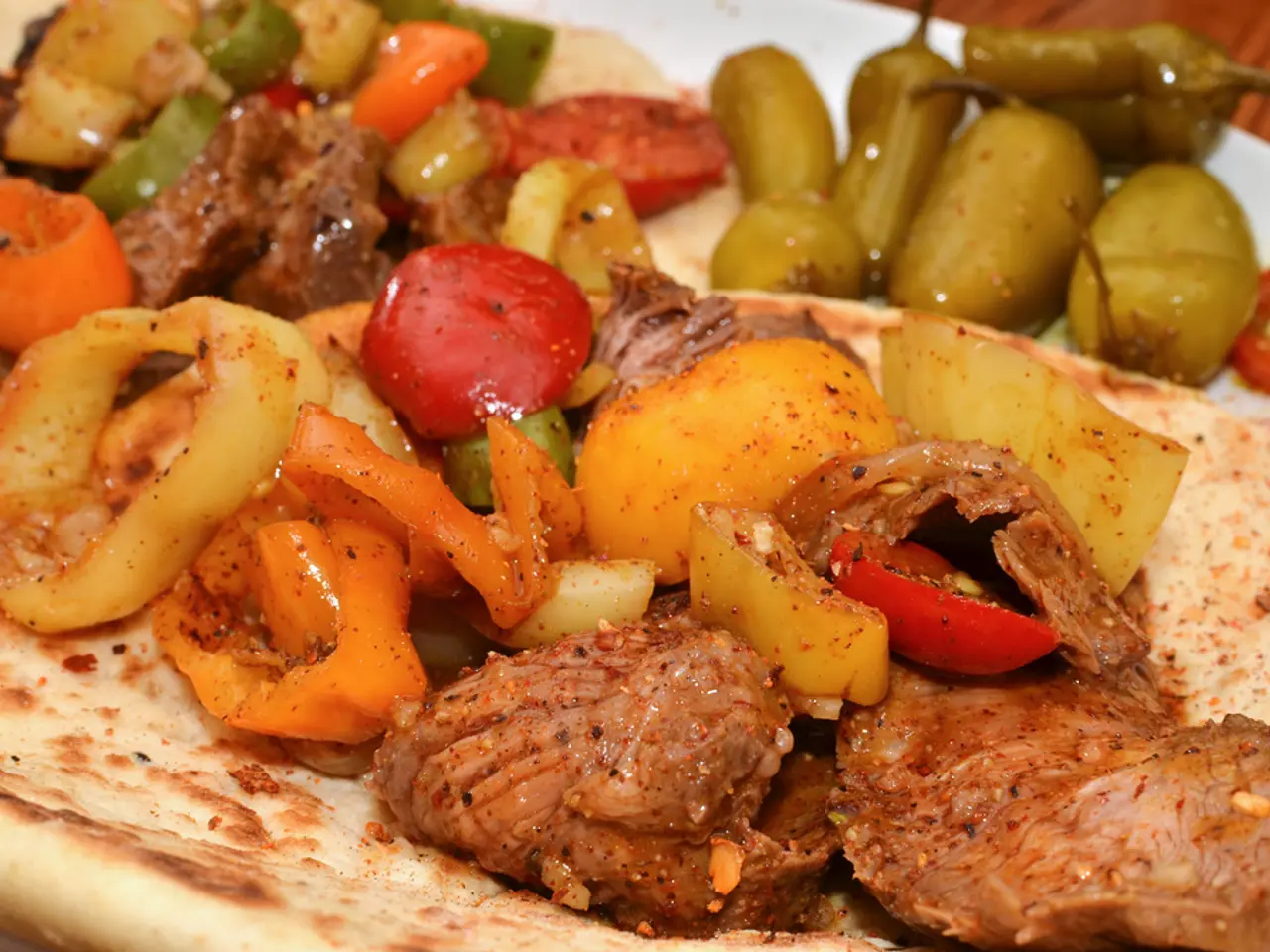Is Bacon Consumption Compatible with a Balanced, Nutritious Diet?
Bacon, a popular staple in many diets, is more versatile than you might think. It can be made not only from pork but also from other meats like beef and turkey, as well as non-meats such as tempeh, shiitake mushrooms, coconut, breadcrumbs, and rice paper. This versatility opens up a world of options for vegans and those seeking alternatives to traditional pork bacon.
Bacon is a salt-cured pork product, typically from the belly or less fatty parts of the pig. A slice of standard American-style bacon contains approximately 44 calories, 3 grams of fat, 3.5 grams of protein, 1 gram of saturated fat, and 177 milligrams of sodium. If you're watching your sodium intake, center-cut bacon contains about 30% less fat and significantly less sodium compared to its regular-cut counterparts.
However, it's important to note that bacon is a processed meat and may be carcinogenic, associated with the development of certain cancers like colorectal, gastric, and breast cancer. Nitrates and nitrites used in curing bacon can transform into cancer-causing chemicals known as nitrosamines when exposed to high heat. Cooking bacon at a lower temperature for a longer amount of time can help reduce the formation of harmful chemicals. Cooking bacon in a microwave or oven at 350°F (176°C) can also reduce nitrosamine production.
Vitamin C is added to bacon to help reduce the formation of nitrosamines. Bacon is rich in B vitamins and is a solid source of selenium, one of the most powerful immune-boosting antioxidants in our diet.
For those seeking a leaner option, turkey bacon contains more sodium to make up for the less palatable mouthfeel. On the other hand, Canadian bacon, also known as peameal, back, Irish or English, is sliced from pork loin and typically dusted in cornmeal. The most common origins of the bacons marketed in the USA trace back primarily to pork from American-raised pigs, particularly from regions known for pork production like the Midwest and Southern United States, where traditional curing and smoking methods are established.
It's worth mentioning that a high salt diet has been linked to elevated blood pressure in some people and may increase the risk of stomach cancer. Consuming processed meats has also been associated with an increased risk of dementia.
In the culinary world, there's an Italian version of bacon called pancetta, which is cured but not smoked. This versatile ingredient is used in a variety of dishes, adding a rich, savoury flavour. Whether you prefer traditional pork bacon, vegan alternatives, or international varieties, there's a bacon for everyone to enjoy. Just remember to consume in moderation and consider the health implications.
Read also:
- Understanding Hemorrhagic Gastroenteritis: Key Facts
- Stopping Osteoporosis Treatment: Timeline Considerations
- Tobacco industry's suggested changes on a legislative modification are disregarded by health journalists
- Expanded Community Health Involvement by CK Birla Hospitals, Jaipur, Maintained Through Consistent Outreach Programs Across Rajasthan








